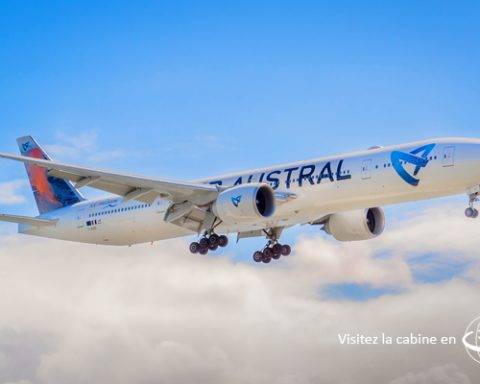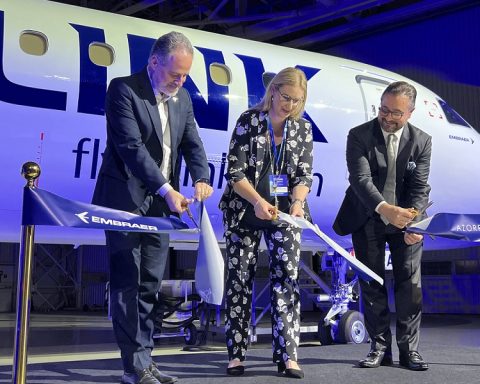 The International Air Transport Association (IATA) has called for urgent action to deepen the understanding on the formation and climate impact of aviation contrails to develop effective mitigation measures. The newly released IATA report Aviation Contrails and their Climate Effect: Tackling Uncertainties and Enabling Solutions calls for a strengthening of collaboration between research and technological innovation, coupled with policy frameworks to address aviation’s non-CO2 emissions through more atmospheric data.
The International Air Transport Association (IATA) has called for urgent action to deepen the understanding on the formation and climate impact of aviation contrails to develop effective mitigation measures. The newly released IATA report Aviation Contrails and their Climate Effect: Tackling Uncertainties and Enabling Solutions calls for a strengthening of collaboration between research and technological innovation, coupled with policy frameworks to address aviation’s non-CO2 emissions through more atmospheric data.
 The report highlights the complexity of contrail science, noting gaps in the understanding of how contrails form, or when they could persist, and how they impact the climate. The lack of high-resolution, real-time data on atmospheric conditions, particularly humidity and temperature at cruising altitudes, hinders precise contrail forecasting, IATA stated.
The report highlights the complexity of contrail science, noting gaps in the understanding of how contrails form, or when they could persist, and how they impact the climate. The lack of high-resolution, real-time data on atmospheric conditions, particularly humidity and temperature at cruising altitudes, hinders precise contrail forecasting, IATA stated.
“The industry and its stakeholders are working to address the impact of non-CO2 emissions on climate change, particularly contrails. To ensure that this effort is effective and without adverse effects, we must better understand how and where contrails form and shrink the uncertainties related to their climate impact. “Action now” means more trials, collection of more data, improvement of climate models, and maturing technologies and operations. Formulating and implementing regulations based on insufficient data and limited scientific understanding is foolish and could lead to adverse impacts on the climate. That is why the most important conclusion from this report is to urge all stakeholders to work together to resolve current gaps in the science so that we can take effective actions,” said Willie Walsh, IATA’s Director General.
IATA stated that, with current levels of understanding, the report made some recommendations, including that “in the immediate term (2024-2030), the priority for mitigating aviation’s climate change impact should be on reducing CO2 emissions over the uncertain gains that could stem from contrail detection and their mitigation.”
The report also identified mid-term actions from 2030-2040; and longer-term actions spanning 2040-2050 that requires aircraft to provide data for effective monitoring and evaluation of the non-CO2 effects of alternative fuels, with extended mitigation measures, among others.
 Despite extensive studies, significant uncertainties exist with respect to the capacity to predict individual contrail formation and their specific climate impact. Recent collaborations among meteorologists, climate researchers, airlines, and aircraft manufacturers have yielded new insights that underscore the need for enhanced data collection and analyses of the likely air traffic network complications regarding any solutions. Trials with modified flight paths and alternative fuels have shown potential yet limited efficacy due to the variability of atmospheric conditions and the localized nature of where contrails occur.
Despite extensive studies, significant uncertainties exist with respect to the capacity to predict individual contrail formation and their specific climate impact. Recent collaborations among meteorologists, climate researchers, airlines, and aircraft manufacturers have yielded new insights that underscore the need for enhanced data collection and analyses of the likely air traffic network complications regarding any solutions. Trials with modified flight paths and alternative fuels have shown potential yet limited efficacy due to the variability of atmospheric conditions and the localized nature of where contrails occur.
Advancements in developing humidity sensors to be placed on aircraft are critical for contrail prediction and avoidance strategies. Ongoing research aims to develop more accurate, robust, and scalable solutions, and the use of sensors on a limited population of aircraft would allow the necessary improvement and validation of numerical weather prediction models, IATA noted.
IATA said that Aviation Contrails and their Climate Effect: Tackling Uncertainties and Enabling Solutions, is available on IATA’s website and will be discussed at the upcoming IATA Annual General Meeting in Dubai, 2-4 June. The report was developed in collaboration with several organizations and companies including Aerospace Technology Institute, Airbus, Airlines for America, Air Transport Action Group (ATAG), Boeing, FAAM Airborne Laboratory. Forschungszentrum Jülich, and German Meteorological Service (Deutscher Wetterdienst). Others include German Aerospace Center (DLR), In-service Aircraft for a Global Observing System (IAGOS), National Centre for Atmospheric Science, and Royal Aeronautical Society as well as University of Leeds and World Meteorological Organization.




